
錫石の宝石:特性、意味、価値など
 錫石は、何千年もの間錫の採取に使われてきた光沢のある鉱物です。また、ダイヤモンドをはるかに凌ぐ、驚くほど美しい分散度(色鮮やかな輝き)を持つ宝石でもあります。
錫石は、何千年もの間錫の採取に使われてきた光沢のある鉱物です。また、ダイヤモンドをはるかに凌ぐ、驚くほど美しい分散度(色鮮やかな輝き)を持つ宝石でもあります。
錫石は希少ですか、それとも一般的なものですか?鉱物としては、錫石は世界中でよく見られます。しかし、ファセット加工可能な宝石品質の結晶は非常に希少で、通常は非常に小さいです。
錫石は工業的にも宝石学的にも有益な特性を持ち、特にコレクターにとって過小評価されている宝石です。このガイドでは、錫石のジュエリー、宝石、用途、価格について知っておくべきことをすべてご紹介します。
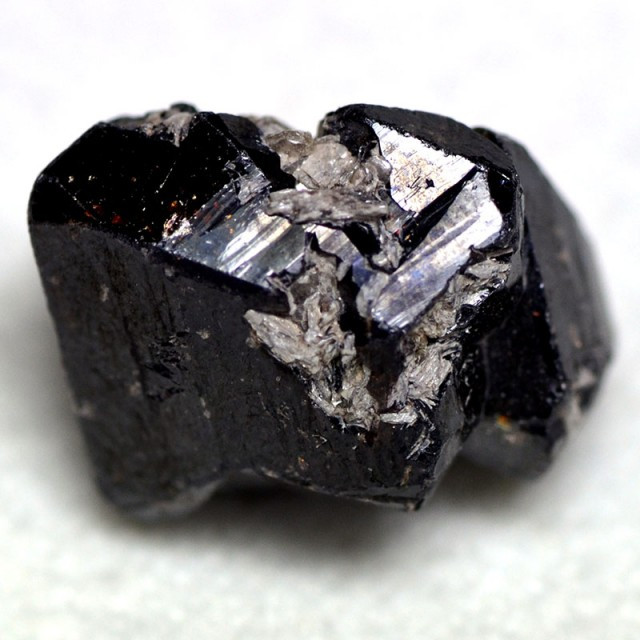
錫石について
スズ石は半貴石ですが、その分散(ファイア)は貴石であるダイヤモンドのほぼ2倍です。射手座の星座石であり、数秘術では2と8に結び付けられます。
錫石の最も一般的な愛称はブリキ石ですが、他に次のような愛称もあります。
錫スパー
ルビー缶
ナデルツィナー(フリジア語で「錫鉱石」または「結晶錫」)
針状錫鉱石
スペアブリキ
Stannum caliciforme(ラテン語で「カップ型の錫」)
宝石以外に、錫石にはどのような用途があるのでしょうか?上記の名称からお察しの通り、錫石の主な用途は錫に関係しています。
歴史を通して、そして今日に至るまで、スズ石はスズ金属の最大の供給源です。なぜでしょうか?それは、この鉱物の78.6%がスズで構成されているからです。
大量の錫はどこへ行くのでしょうか?錫は世界中で最も広く利用されている電子機器(携帯電話を含む)で、回路基板のはんだ付けに最適です。錫の融点が低いため、はんだ付けによる接合がはるかに容易になります。
錫石から抽出された錫の他の用途としては、容器や研磨粉などがあります。

錫石の仕様と特徴
スズ酸化物鉱物である錫石の化学式はSnO2です。タンタル、鉄、ニオブが最も一般的な不純物です。また、以下の不純物も含まれる場合があります。
亜鉛
マンガン
タングステン
ゲルマニウム
スカンジウム
インジウム
ガリウム
スズ石はルチル鉱物グループに属します。ルチルは、金色の針状のインクルージョンとしてクォーツに浸透する美しいルチルクォーツで知られています。ルチルはこのグループの中で最も一般的な鉱物であり、スズ石とともに重要な金属源となります。ルチルの場合は、二酸化チタン鉱物であり、重要なチタン鉱石です。
収集家の間で錫石が珍重される理由の一つは、その多様な結晶性です。錫石は、エルボー双晶(60度に曲がった双晶)、貫通双晶(互いに交差して成長した双晶)、接触双晶(基部で結合した双晶)といった珍しい双晶を形成します。
この錫石は、錐体状や両錐状、繊維が放射状に広がる腎臓形(腎臓型)、ブドウ形(ブドウの房に似ている)など、他の結晶習性でも愛されています。
識別に関しては...

石が錫石であるかどうかはどうやってわかりますか?
最も簡単な識別方法は、錫石の密度、つまり比重です。錫石は6.7~7.1と非常に密度が高く、寸法的には同サイズの他の石よりも重いです。
その他の特徴的な要素は次のとおりです。
屈折率: 屈折計を使用している場合、錫石の屈折率はツールの「限界を超えます」。
カラーゾーン: 類似の宝石とは異なり、錫石には色のゾーンがある場合があります。
光沢: ファセットカットされた錫石の宝石は通常、アダマンチン(ダイヤモンドのような)光沢を呈しますが、これはほとんどの宝石では珍しい光沢です。
ダイヤモンドは似たような光沢を持ちますが、錫石よりもはるかに硬い( モース硬度10)です。しかし、錫石の分散度は0.071で、ダイヤモンドの0.044よりもかなり高いです。
閃亜鉛鉱も同様の光沢と色を持ちますが、分散度は高く (0.156)、硬度 (3.5~4) と密度 (3.9~4.1) は低くなります。
同様に高分散、高密度の石としては辰砂と輝石タンタル石がありますが、どちらの石も錫石よりも柔らかく、密度が高いです。
錫石の鉱物データは次のとおりです。
モース硬度:6~7
色: 黒、茶、赤、灰色、黄、緑、白、無色、紫、黄褐色、ワインレッド、赤褐色
結晶構造:正方晶
光沢:金剛石状、ガラス質(ガラス状)、亜金属光沢。割れ目には油状の光沢が見られることがある。
透明性:透明から不透明。通常は不透明だが、薄い結晶は半透明
屈折率:2.006-2.101
密度:6.98 - 7.01
分裂:[100]では不完全、[110]では不明瞭
骨折:不規則/不均一または貝殻下骨折
縞模様:白から茶色
発光: まれに蛍光を発する - SW-UVでは黄色
複屈折:0.098
多色性:あり。通常、緑、黄、赤、および/または茶色の弱い(時には強い)二色性。多色性の「ハロー」が時々現れる。
スズ石の結晶習性は魅力的な特性であるだけでなく、さまざまな変種を生み出してきました。
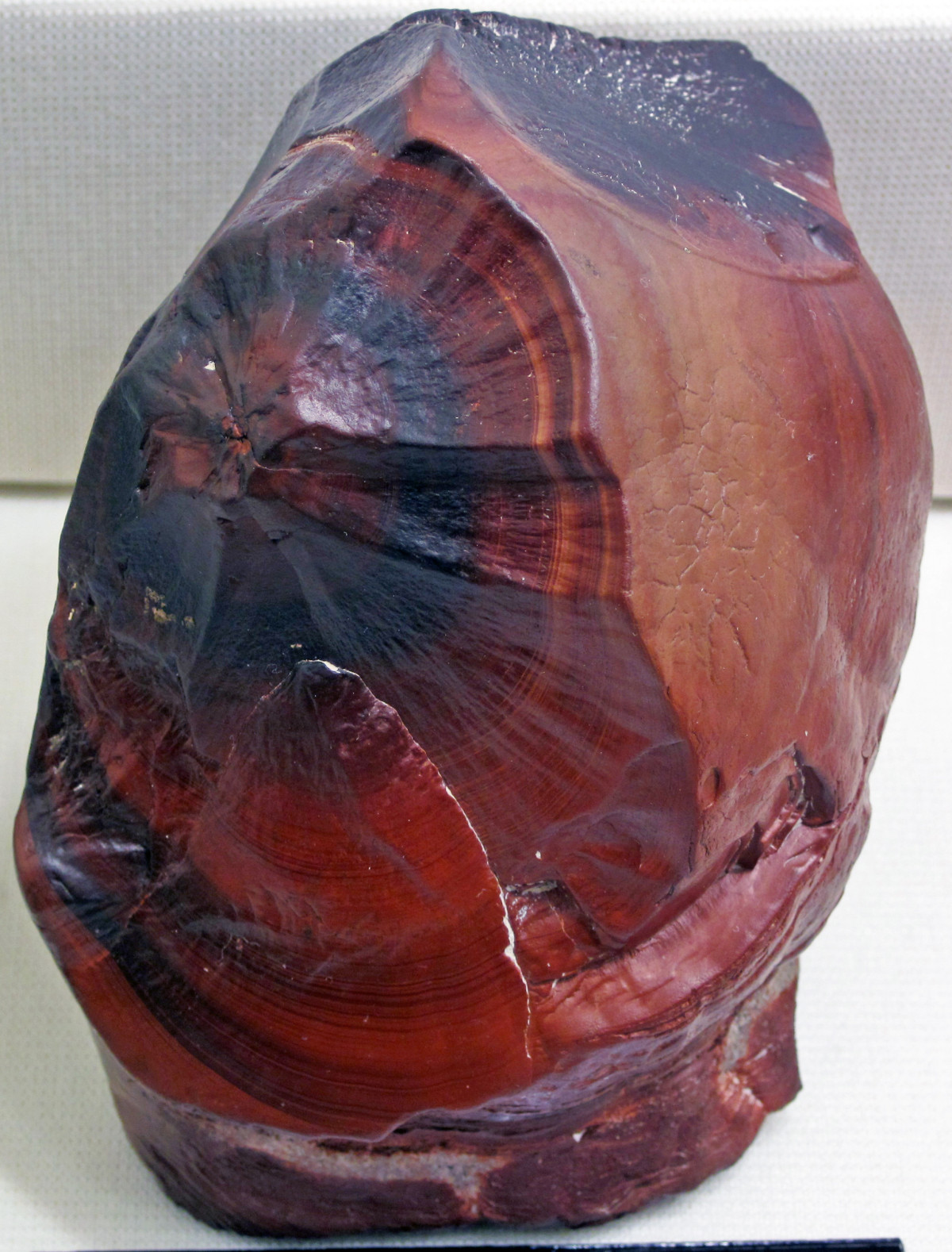 画像クレジット: James St. John | Flickr
画像クレジット: James St. John | Flickr
錫石の種類
錫石の多くの種類は、その愛称や工業用途と同様に、錫と関連付けられています。実際、名称に「錫」を含まない種類は1種類だけです。以下でそれぞれの種類を見てみましょう。
木製ブリキ
木錫は、錫石の微結晶(または隠微結晶)の一種です。玉髄と石英に詳しい方なら、木錫と玉髄の関係は、錫石と石英の関係と同じだとお分かりいただけるでしょう。
この品種には、木の切り株に見られる年輪に似た、繊維質の同心円状の色の縞模様の年輪があります。
生地缶
ドウティンはイギリスのコーンウォール原産の白い品種で、質感と色が調理されていないパン生地に似ていることからこの名前が付けられました。
ヒキガエルの目缶
ヒキガエルの目玉焼きは、色も食感もドウ缶に似ていますが、ブドウのようなブドウ状、あるいは腎臓のような腎状の形をしています。また、放射状の繊維質と色の縞模様があり、ヒキガエルの目に似ています。
ストリームティン
渓流錫は渓流水によって磨耗した丸い錫です。
アイナライト
アイナライトは、名称に「錫」を含まない唯一の変種で、錫石の一種で、最大10%の五酸化鉄タンタル(FeTa2O6)を含みます。最初の産地はフィンランドでした。
基礎は終わりましたので、次は錫石の象徴と歴史について見ていきましょう。

錫石の意味と歴史
錫石は顕現、知恵、そして守護と関連があり、神聖な光の象徴でもあり、「神聖な石」という愛称で呼ばれています。
古代において、錫の主な供給源は錫石でした。錫を目的とした錫石の採掘は、銅器時代(紀元前3,500年から2,300年)にまで遡ります。錫石は、初期の金属合金の一つでもありました。
名前については、聞く人によって2つの説明があります。1つは、ギリシャ語で「錫」を意味する「 kassiteros 」に由来するというもので、理由は明白です。
2 番目の説明は、ローマ以前のカッシテリデス諸島、つまり合意された位置のない島々 (おそらくスペイン付近) から来ています。
1400年代、鉱山労働者たちはボヘミア(チェコ)とザクセン(ドイツ)の鉱床から錫石の採掘を始めました。これらの地域での採掘は1600年代にピークを迎えました。
ドイツの化学者マルティン・ハインリヒ・クラプロートは、1797 年に錫石についての最初の記述を発表しました。 1700 年代から 1800 年代にかけて、イギリスのコーンウォールが新たなスズ石生産の中心地となりました。
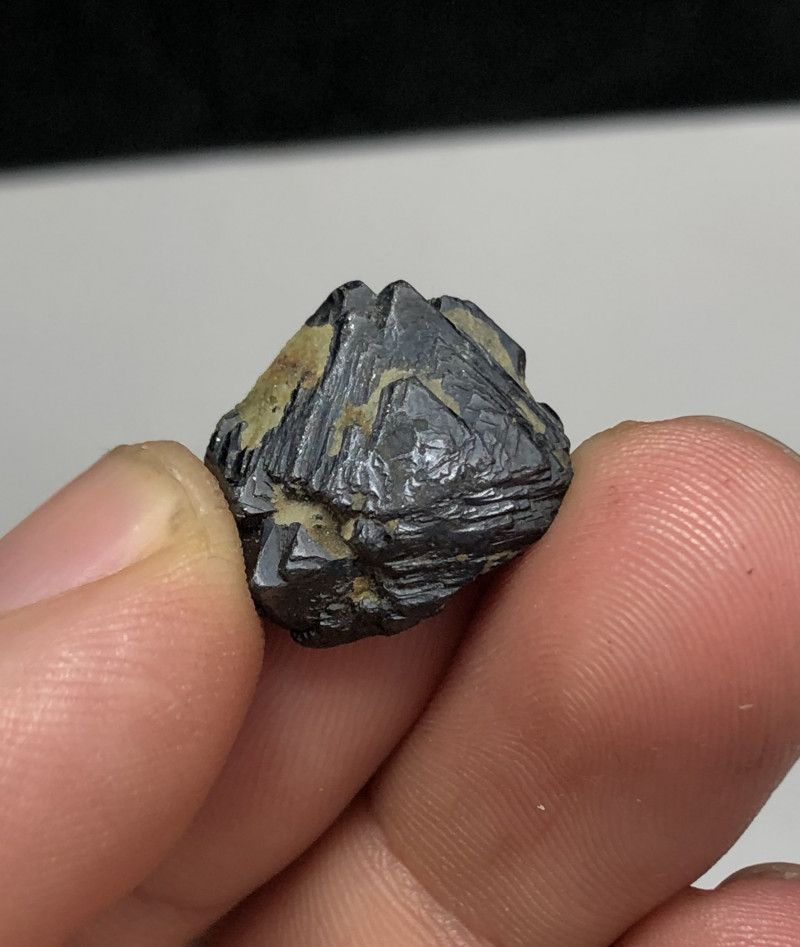
錫石の治癒特性
他の宝石と同様に、スズ石の色はヒーリングストーンとしての効能に影響を与えます。スズ石の結晶の多くは黒色で、他の黒色宝石と同様に、グラウンディングとバランス調整の効果をもたらします。
茶色の錫石は、他の茶色の宝石と同様に、ルートチャクラを開き、保護と安定をもたらします。黄色または緑の錫石は、仙骨チャクラとハートチャクラを調和させ、感情と欲望を調和させるチャクラストーンでもあります。
錫石の具体的な身体的および感情的治癒効果を見てみましょう。
身体の治癒
身体的には、スズ石は心臓と肺に作用し、喘息などの疾患に苦しむ人の呼吸を強化すると言われています。また、脳を刺激し、記憶力を向上させるとも信じられています。
感情的な癒し
感情面では、錫石は目標を実現し、その過程で問題を解決するのに役立ちます。特に分析的思考や数学的思考に効果的です。
さらに、クリスタルヒーラーはこの石を、楽観性、グラウンディング、そして回復力を高めるために用います。拒絶や見捨てられの痛みから立ち直ろうとしている人にとって、スズ石は新鮮で明るいスタートを切る助けとなるでしょう。

錫石宝石の特性
専門家は、色、カット、透明度、カラット重量などに基づいてスズ石の価値を判断します。また、加工の有無も検査することもあります。
色
鮮やかな色合いの錫石は、その美しさだけでなく、宝石の輝きと光沢を際立たせるため、最も価値が高いとされています。多色性も、鮮やかな色合いの宝石で最も優れています。
最も一般的な色は茶色と黒、または茶色がかった黒です。驚くべきことに、錫石は異色性を持ち、最も純粋な状態では無色です。茶色と黒は鉄の不純物に由来します。
錫石の珍しい色合いには、ワインレッド、赤褐色、黄褐色、紫などがあります。多くの石とは異なり、淡い色の標本は濃い色の標本よりも価値が高い場合が多いです。
カット
適切なファセットカットを施すことで、カシテライトはダイヤモンドよりも輝き、輝きを増します。一般的なファセットカットは、エメラルドカット、オーバルカット、クッションカット、ラウンドカットです。
木錫錫石は通常、 カボション、自由形状、または彫刻としてカットされます。縞模様が美しい装飾品です。
さらに、魅力的な結晶習性を持つ錫石は原石(カットされていないもの)で販売されることもあります。
明瞭さ
ほとんどの錫石原石には内包物が含まれています。
多くの場合、ベール(結晶内の治癒した亀裂で、指紋のようなインクルージョンに似ています)や二相インクルージョン(結晶内の空洞に液体と蒸気が充填されているもの)が見られます。ボリビア産の錫石には、針状のトルマリンインクルージョンが見られることもあります。
より希少ではありますが、肉眼で内包物が確認できない(つまりアイクリーン)錫石が最も価値があります。
カラット重量
肉眼で確認できるカシテライトの宝石は、ほとんどの場合1カラット未満です。塊状の素材から作られたカボションは、それよりも大きい場合があります。
ボリビアでは、明るい茶色から濃い茶色の錫石が産出されており、15カラットのファセットカットされた宝石はクラリティの高いもの、25カラットの宝石はクラリティがそこそこのものも産出されます。2カラットを超える無色の錫石は非常に人気があります。
トリートメントと合成
通常は無処理ですが、2001年に米国宝石学研究所(GIA)が研究した「スターカシテライト」の標本の中には、人工的な処理が施されているものもありました。これらの石には、アステリズムを生み出す平行繊維に似た線が刻まれていました。
星状現象は貴重な性質なので、この光学現象が自然に現れる石ではないため、販売されている「スターカシテライト」標本には注意してください。
科学者たちは合成スズ石を製造しました。これは主に研究目的で作られていますが、近いうちに宝石市場に登場するかもしれません。
本当の話に戻りましょう。天然の錫石はどのようにして形成されるのでしょうか?
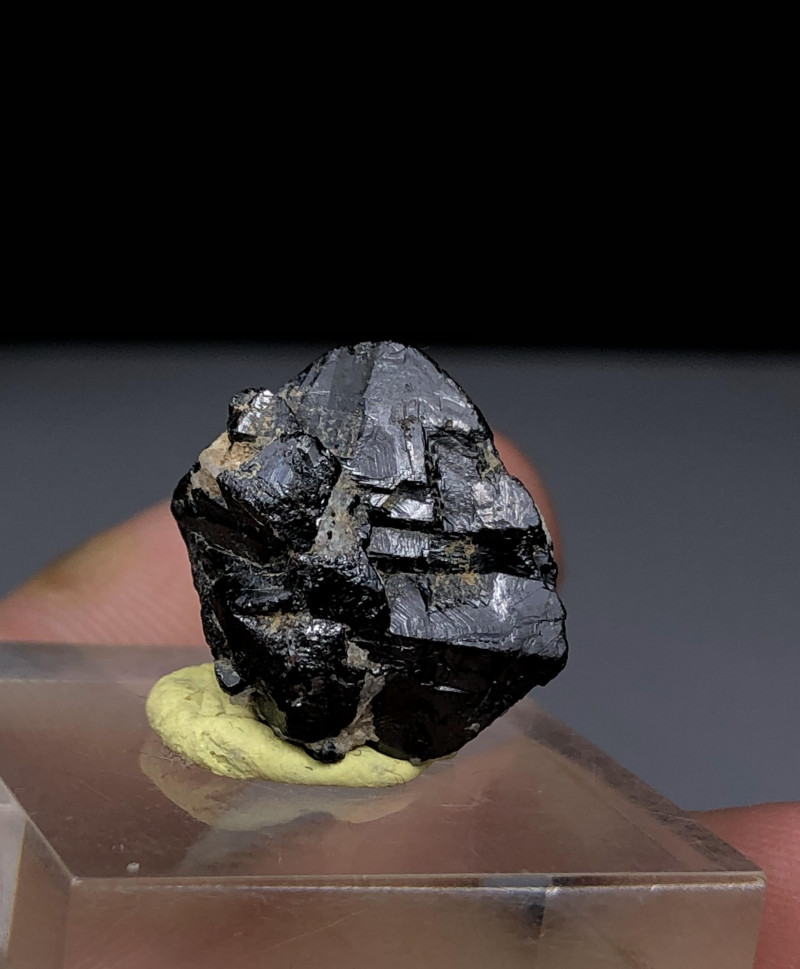
錫石の形成と供給源
錫石は通常、溶解した元素を含んだ水が岩脈に沈殿して蒸発し、残った元素が結晶化することで形成されます。
スズ石のほとんどは、花崗岩、流紋岩、ペグマタイトの鉱脈の中に形成されます。また、水が鉱物を新しい場所に運ぶ沖積砂鉱床(渓流スズによく見られます)にも見られます。
採掘場所
スズ石は世界でどこで産出されますか?現在、宝石品質のスズ石のほとんどはボリビア産で、次いでロシアと中国が続きます。その他の主要な産地は、ビルマ、ナイジェリア、インドネシア、タイ、マレーシアです。
より小さなスズ石の産地としては、次のようなものがあります。
オーストラリア
カナダ
チェコ
日本
メキシコ
パキスタン
ポルトガル
スペイン
スリランカ
タスマニア
英国(イングランド)
アメリカ合衆国(アラスカ、カリフォルニア、ネバダ、サウスカロライナ、サウスダコタ、バージニア、ワシントン)
ベトナム
販売中の錫石をご覧になりたいですか?では、価格面で期待できるものについてお話ししましょう。
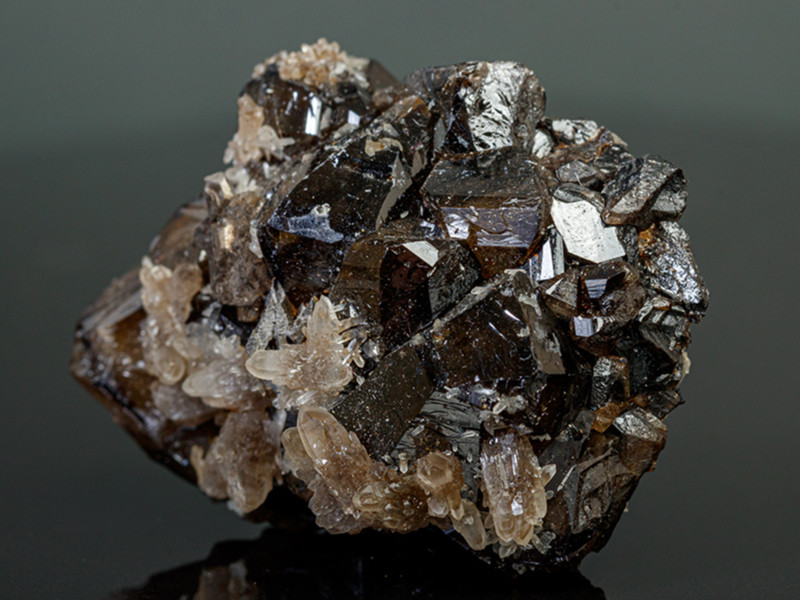
錫石の価格と価値
錫の抽出に用いられる錫石鉱物と、宝石用のファセット加工可能な原石は、価格が大きく異なります。前者は資源量が多く、量が多いほど価格が高くなります。鉱石(宝石品質ではないもの)の錫石の価格は、1kgあたり約3~5ドルです。
卸売価格では、ファセットカットされた錫石は1カラットあたり約80ドルです。原石の黒水晶ははるかに手頃で、1カラットあたり0.10ドルから0.50ドルで取引されます。しかし、光沢のある希少な原石は85ドルから400ドルで取引されることもあります。
不透明なタンブル加工の錫石は通常 3 ~ 5 ドル程度です。
錫石のケアとメンテナンス
幸いなことに、スズ石は比較的硬く耐久性のある宝石なので、普段使いに最適です。ただし、ブレスレットや指輪など、傷つきやすい宝石の場合は、傷を防ぐために保護セッティングをお勧めします。
錫石は耐久性が高いため、 お手入れも簡単です。最も安全な洗浄方法は、ぬるま湯、中性洗剤、柔らかい歯ブラシを使うことです。
カシテライトで魅了!
スズ石の重要性は主に錫の含有量にありますが、その宝石自体も気分を高め、地に足をつけさせる効果があります。スズ石のジュエリーを手に入れれば、通りすがりの人々を魅了すること間違いなしです!
Gemstone Encyclopedia検索
最新記事
ヤシ象牙彫刻は、植物象牙とも呼ばれ、南米のヤシ科植物フィテレファス属のヤシの実から倫理的に採取された、象牙の天然代替品です。このガイドでヤシ象牙についてすべて学びましょう!
15th Jan 2026
レインボーラティスサンストーンは、様々な内包物によって3つのゴージャスな光学的効果を持つ長石の一種です。燃えるように鮮やかな色合いと格子模様が、コレクターにとって希少な宝石となっています。
12th Jan 2026
記事のカテゴリ
How To's is where you will find helpful articles from gem Rock Auctions on how to cut gemstones, select gemstones and buy gemstones.
9記事数


